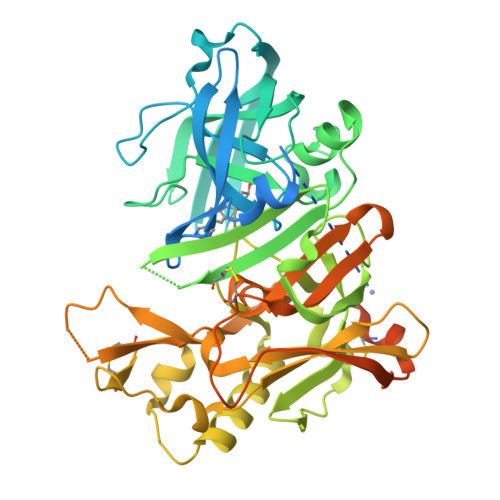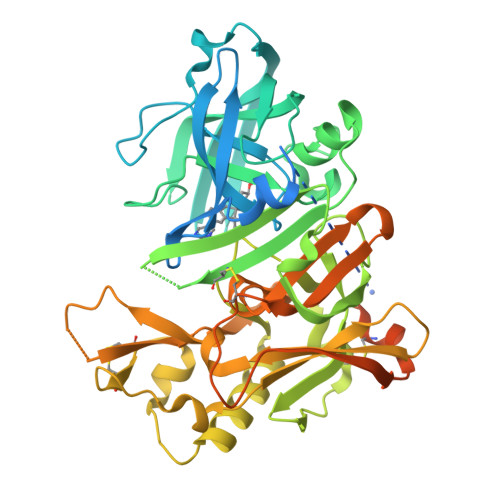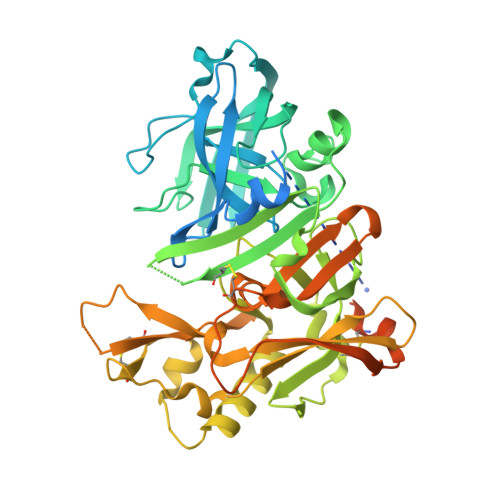Toward beta-Secretase-1 Inhibitors with Improved Isoform Selectivity.
Johansson, P., Kaspersson, K., Gurrell, I.K., Back, E., Eketjall, S., Scott, C.W., Cebers, G., Thorne, P., McKenzie, M.J., Beaton, H., Davey, P., Kolmodin, K., Holenz, J., Duggan, M.E., Budd Haeberlein, S., Burli, R.W.(2018) J Med Chem 61: 3491-3502
- PubMed: 29617572
- DOI: https://doi.org/10.1021/acs.jmedchem.7b01716
- Primary Citation of Related Structures:
6EJ2, 6EJ3 - PubMed Abstract:
BACE1 is responsible for the first step in APP proteolysis, leading to toxic Aβ production, and has been indicated to play a key role in the pathogenesis of Alzheimer's disease. The related isoform BACE2 is thought to be involved in processing of the pigment cell-specific melanocyte protein. To avoid potential effects on pigmentation, we investigated the feasibility for developing isoform-selective BACE1 inhibitors. Cocrystal structures of 47 compounds were analyzed and clustered according to their selectivity profiles. Selective BACE1 inhibitors were found to exhibit two distinct conformational features proximal to the flap and the S3 subpocket. Several new molecules were designed and tested to make use of this observation. The combination of a pyrimidinyl C-ring and a methylcyclohexyl element resulted in lead molecule 28, which exhibited ∼50-fold selectivity. Compared to a nonselective BACE1/2 inhibitor, 28 showed significantly less inhibition of PMEL processing in human melanocytes, indicating good functional selectivity of this inhibitor class.
Organizational Affiliation:
Discovery Sciences, IMED Biotech Unit , AstraZeneca , S-43183 Mölndal , Sweden.

















